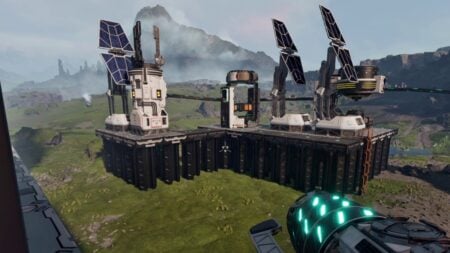Skip To...
There is a certain very specific satisfaction that only management games give you. It’s not the one you get from destroying an empire or creating the largest fleet in the galaxy. No. In this case, it’s the satisfaction of seeing a small town that started with a handful of houses become the metropolis you’ve always dreamed of. Despite not being the world’s fittest builder, my Cities: Skylines 2 game review gave me hours of fun thanks to the deep city management systems, customization, and the freedom to do whatever I wanted with my metropolis. It would be the perfect game of the genre so far if some performance issues weren’t so latent.
Cities: Skylines 2 Review: Brick by Brick

It had been years since I had spent hours and hours in a game trying to build something. Yes, there have been other titles like Against the Storm that gave me the satisfaction of building a civilization. But I was missing that fantastic scale that only Cities: Skylines provides. And yes, although many still play the first installment, thanks to the wide range of mods, something new never hurts. So, without further ado, let me tell you the story of Outer Heaven, my city that started with a small residential and commercial district, faced tornadoes and forest fires, and eventually had the money to build its international airport.
Story: Where Will You Take Your City?

What I have always liked about games published by Paradox Interactive is the feeling of freedom in each of them. Although some focus on strategy and conquest, others just give you a huge playground to build whatever you want. That’s what I did during my Cities: Skylines 2 game review.
As I was eager to begin my Cities: Skylines 2 journey, I took on the tutorial fast and learned the ropes. I set up my basic services and a few roads that weren’t the best because I was not an expert road builder. Still, I was happy watching my streets filled with new small homes and a few apartment complexes. In minutes, I had a solid neighborhood that worked smoothly. That was until the Trilby family moved in.
You see, the game launches a kind of notification system similar to a social network where you can see what the citizens think, and I swear that the Trilby family was the one that complained the most.

Since I thought I was the ideal city manager, I kept building houses because that was the demand, but then I saw that the Trilby’s wanted a quieter neighborhood. In an effort to please them, I moved some buildings to reduce noise pollution. The family’s daughter didn’t take long to complain about the healthcare system. What did I do? I lowered taxes and upgraded the clinic. Afterward, the mother complained about the crime. I installed a police station. The father now complained that there were too many jobs. What did I do? I proceeded to demolish the Trilby household.
Why is it important to mention this whiny family? Because at the end of everything they put me through, I had created a better city for everyone else. It was a city with apartments, a police station, a park maintenance building, and a soccer field. The game prompts you to listen to the needs, and that makes the direction of your town change. Come to think of it, I miss evicting the Trilby’s. In the first few hours of the game, I had already created a story for my city. And that one was mine alone. Everyone will have a different one, and the freedom to change the course of a city on the fly is fascinating.
Gameplay: A Superb City Builder

Ever since it was announced, the biggest selling point of Cities: Skylines 2 was realism and immersion, and let me tell you that during my game review, I did experience that. Sure, some flaws overshadowed these systems, but I didn’t stop enjoying the game at any point.
The gameplay is somewhat similar to the first installment, with the most significant difference being the emphasis on simulation and realism. Compared to the first one, the game is much, much bigger, allowing you to experience the quality that the developers put into bringing your city to life. If you create a residential district, you can visit each house to see the family and follow them until some die. From there, the city feels like a living organism with people going shopping, car accidents, and people waiting for the bus. I had never seen anything simulated on this scale before, and it was amazing.
For builders, there are more than enough resources to create your dream city. You have all kinds of roads that feel better to build. Some elements help you with curves, and if you don’t feel fit to build roads, after unlocking some developments for your city, you can get some templates that help a lot.

Speaking of development, the game features a development tree that allows you to unlock new facilities depending on the category. Want better and bigger roads? Invest in that category to unlock new carts. Would you prefer a police station? Focus on the government development tree. Every decision is important, and the first few levels are crucial in deciding what to unlock because once you do, there’s no turning back.
If you care about the size, let me tell you the maps are immense. This time, you have 150 tiles on each map to build whatever you want. These are unlocked as your city levels up, and paying attention to which ones you unlock is important. While the first installment is vast, this one is five times bigger, which can be overwhelming for some. Still, fortunately, there are systems in place to make management even easier.

I have never been good at managing, and doing it finely sometimes caused me problems. Cities: Skylines 2 has one of the most gamer-friendly interfaces I have ever seen. If you want to manage taxes, just go to the tax window and adjust them with a click. If you need to make a transportation line between trains or buses, you just add waypoints, and it’s so easy that I wanted to keep expanding my city to take care of these things, whereas in other games, I find it difficult. Colossal Order and Paradox have made a very accessible game for newcomers and veteran players.
Unfortunately, the game has a lot of performance problems. Although we had updates during the review period, it was strange to see that even in medium quality, the game did not go over 40fps, which is weird since my PC meets the recommended specs. In some moments, when I zoomed to the maximum to observe certain houses, it dropped to 20fps, although it only lasted a few seconds. I could understand this for an action game, but a more “static” game like this genre should be optimized better. Although the performance was a bit annoying initially, I forgot once I was building. But, if your PC does not meet the requirements, you might struggle.
Graphics and Audio: Realism at its Finest

As much as the studio promised excellent simulation, they also promised realism and delivered at the cost of optimization problems. Even so, when I paused the game, I could see the detail in the streets and every building—the realistic water and smoke effects in the distance. Even the forest fires looked almost real, adding an extra point to the immersion part.
The audio is not something out of this world. The music is very relaxing and pleasant, which goes hand in hand with what you are doing: building a peaceful city until a tornado comes to put it in danger. An in-game radio also gives tips on what you are doing right and wrong. One thing that I feel is repetitive is some of the messages. I know my commercial district is good, and the announcer’s wife recommends yerba mate; repeating the message four times in ten minutes is unnecessary.
Related:
Link TextConclusion: The Next Step in City Builders

While I think Cities: Skylines 2 is a great game and has the potential to be one of the best of the year, my game review made me see that developers who want to make something realistic or “next-gen” abandon optimization, something that I know is going to give problems to many. But, after all that, Cities: Skylines 2 is a tremendous game full of hours of fun, a lot of potential, and, without a doubt, one of my favorites in the genre. I can’t wait to see what the community and developers do to expand this new installment.
Cities: Skylines 2 is available now on PS5,
Review copy given by Publisher.
Cities: Skylines 2 (PC Reviewed)
Cities: Skylines 2 is a sequel that tries to improve upon everything its predecessor brought, but still needs one last push.
Pros
- Beautiful almost realistic graphic style.
- Some of the best city-building mechanics in recent years.
- Managing a city is extremely easy due to its slick UI.
Cons
- Many optimization issues.
- A few gameplay bugs.







